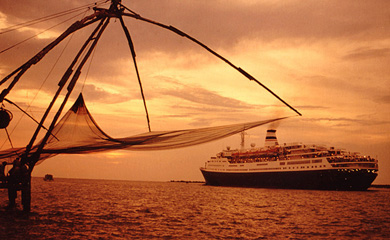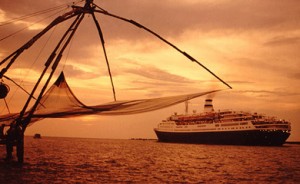 Kochi colonial name Cochin is a vibrant city situated on the south-west coast of the Indian peninsula in the breathtakingly scenic and prosperous state of Kerala, hailed as ‘God’s Own Country’. Its strategic importance over the centuries is underlined by the sobriquet Queen of the Arabian Sea. Informally, Cochin is also referred to as the Gateway to Kerala. Kochi is one of the most popular cities in Kerela, and is often referred as the Gateway to Kerala. Located on the West Coast on India, the city flanked by the Western ghats in the East and the Arabian Sea in the west. Kochi has been rated in the top three tourist destinations by the World Travel & Tourism Council and featured in National Geographic Traveler’s ’50 greatest places of a lifetime’. This lovely seaside city is flanked by the Western Ghats on the east and the Arabian Sea on the west. Its proximity to the equator, the sea and the mountains provide arich experience of a moderate equatorial climate.
Kochi colonial name Cochin is a vibrant city situated on the south-west coast of the Indian peninsula in the breathtakingly scenic and prosperous state of Kerala, hailed as ‘God’s Own Country’. Its strategic importance over the centuries is underlined by the sobriquet Queen of the Arabian Sea. Informally, Cochin is also referred to as the Gateway to Kerala. Kochi is one of the most popular cities in Kerela, and is often referred as the Gateway to Kerala. Located on the West Coast on India, the city flanked by the Western ghats in the East and the Arabian Sea in the west. Kochi has been rated in the top three tourist destinations by the World Travel & Tourism Council and featured in National Geographic Traveler’s ’50 greatest places of a lifetime’. This lovely seaside city is flanked by the Western Ghats on the east and the Arabian Sea on the west. Its proximity to the equator, the sea and the mountains provide arich experience of a moderate equatorial climate.
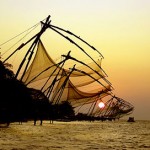 Strictly speaking, Cochin is a small town. But, Cochin has outgrown its original bounds and is now the general name given to much of the region adjoining the original town, which now includes Cochin, Fort Kochi, Mattanchery, Ernakulam and many other nearby towns and villages. Cochin is situated in Ernakulam district in the state of Kerala. Ernakulam is also the name of a town – the administrative capital of Ernakulam district – but, for all practical purposes Ernakulam and Cochin, generally, refer to the same place.Kochi is the arguably the ideal starting point for exploring the unfathomable diversity and beauty of Kerala, rated in the top three tourist destinations by the World Travel & Tourism Council and featured in National Geographic Traveler’s ’50 greatest places of a lifetime’.
Strictly speaking, Cochin is a small town. But, Cochin has outgrown its original bounds and is now the general name given to much of the region adjoining the original town, which now includes Cochin, Fort Kochi, Mattanchery, Ernakulam and many other nearby towns and villages. Cochin is situated in Ernakulam district in the state of Kerala. Ernakulam is also the name of a town – the administrative capital of Ernakulam district – but, for all practical purposes Ernakulam and Cochin, generally, refer to the same place.Kochi is the arguably the ideal starting point for exploring the unfathomable diversity and beauty of Kerala, rated in the top three tourist destinations by the World Travel & Tourism Council and featured in National Geographic Traveler’s ’50 greatest places of a lifetime’.
History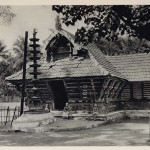
Like most cities in India, Kochi has a very long and illustrious history. But, the originalname is still shrouded in mystery. According to Some historians, traders from the court of the Chinese ruler Kublai Khan, gave Kochi the name of their homeland. Still according to another theory Kochi is derived from the word ‘Kaci’ meaning ‘harbour’. Kochi earned a significant position on the world trading routes after the world famous port at Kodugallur was destroyed by massive flood in river Periyar in 1340 AD. Records show that Kodugallur (Cranganore) was known to the Arabs and Chinese traders for centuries. After the Kodugallur port was destroyed, the forces of nature created a natural harbour at the nearby city – Kochi. Kochi started to grow and soon developed into a major trading point dealing in pepper, cardamom, cinnamon, cloves, etc., which were and still are famous for their quality.The Arabs, British, Chinese, Dutch, Italians and Portuguese helped Kochi emerge as a bustling centre of commercial activity, connecting the mainland to the rest of the world. Kochi owes a lot to great travellers, scholars and traders like Fa Hien, Vasco da Gama, Sir Robert Bristow, etc. to her growth and prosperity. The English called Kochi ‘Mini England’, the Dutch called it ‘Homely Holland’ and the Portuguese called it ‘Little Lisbon’ highlighting Kochi’s prominence. Italian traveller Nicolas Conti wrote in his travelogue: “China is where you make your money, then Cochin is surely the place to spend it.”Over the centuries, the princely state of Kochi came under numerous empires. Over time, the original local rulers were controlled by the Portuguese, Dutch , British and even the Zamorin of Kozhikode (Calicut). Around 1530 AD, under the Portuguese, Kochi grew into a prosperous town. The ruler of Kochi gave the Portuguese permission to build a fort at Kochi called ‘Manuel Kotta’ (Fort Emmanuel) – which is the first European fort in Kochi.
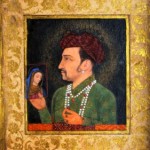 The Dutch invasion began around 1653 and by 1663 they emerged victorious over the Portuguese. The Dutch then built Fort Williams here. The Dutch were defeated by the great rulers of Mysore – Hyder Ali and Tipu Sultan. Finally, when the whole nation lost to the British, Kochi too became a part of the British empire in 1814. The magnificent forts built here were destroyed by the British. Under the supervision of Sir Robert Bristow, Kochi was developed into a major harbour and Willingdon Island was created. Willingdon Island now accommodates the Cochin Port, Naval Airport and the headquarters of the Southern Naval Command apart from a host of other trading and commercial establishments.
The Dutch invasion began around 1653 and by 1663 they emerged victorious over the Portuguese. The Dutch then built Fort Williams here. The Dutch were defeated by the great rulers of Mysore – Hyder Ali and Tipu Sultan. Finally, when the whole nation lost to the British, Kochi too became a part of the British empire in 1814. The magnificent forts built here were destroyed by the British. Under the supervision of Sir Robert Bristow, Kochi was developed into a major harbour and Willingdon Island was created. Willingdon Island now accommodates the Cochin Port, Naval Airport and the headquarters of the Southern Naval Command apart from a host of other trading and commercial establishments.
After India became independent in 1947, the state of Kerala was formed in 1956 by the unification of provinces Kochi, Malabar and Travancore. The Corporation of Kochi was formed in 1967 by the merger of the towns – Fort Kochi, Mattanchery, Ernakulam and many nearby villages. Growth in trade and commercialisation has led to the rise of Kochi as the most important city in Kerala and one of the major cities on the west coast of India.
Places of Interest in Kochi
Being the best starting point to explore the beauty as well as the unfathomable diversity of the Kerala state this city of south India is, informally, regarded as the “Gateway to Kerala”. The number of places of visit, which are located there, just adds on to the fame of this tourist destination. Following are some of those tourist spots in Kochi:
Bolghatty Island: 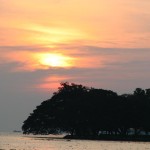
Located within a short distance of boat ride from the city’s mainland, this island houses the Dutch Palace, which has now been turned to a hotel of K. T. D. C. (Kerala Tourism Development Corporation) and a small golf course. This famous picnic spot offers a panoramic view of the harbor and the port.
Cherai Beach:
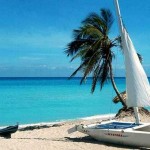 Positioned towards the northern end of the Vypeen Island, this lovely sea beach is bordered by paddy fields and coconut groves. Swimming is one of the common enjoyable activities in this beach of Kochin.
Positioned towards the northern end of the Vypeen Island, this lovely sea beach is bordered by paddy fields and coconut groves. Swimming is one of the common enjoyable activities in this beach of Kochin.
Fort Kochi Beach: 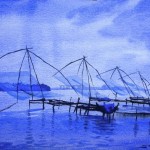
This sea beach along the Kochi Fort is one of the best places to provide a mesmerizing view of sunset in the city. The small beach stalls serving mouth watering preparations of locally caught fresh fish are worth exploring.
Hill Palace:
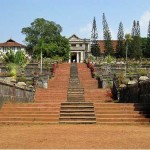 This 19th Century palace of Kochi’s king has been transformed to a museum that exhibits the crown, the throne and the different articles used by the kings.
This 19th Century palace of Kochi’s king has been transformed to a museum that exhibits the crown, the throne and the different articles used by the kings.
Jewish Synagogue: 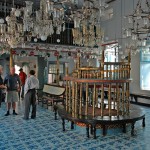
Built in the year 1568, this magnificent synagogue is decorated with Belgian chandeliers and Chinese tiles.
Mangalavanam Bird Sanctuary:
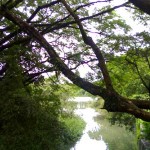 Situated beside the Kerala High Court, this bird sanctuary is home to many rare and exotic species of resident and migratory birds.
Situated beside the Kerala High Court, this bird sanctuary is home to many rare and exotic species of resident and migratory birds.
Mattancherry Palace: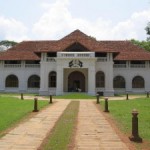
Even called Dutch Palace, this age old palace displays some mural paintings that depict scenes from the Ramayana as well as the Mahabharata, the two great Hindu epics.
Santa Cruz Basilica:
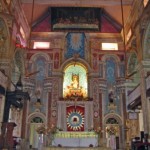 Initially constructed in the year 1505, this Portuguese church was re-structured in 1905 and was recognized as a basilica in 1984 by Pope John Paul II.
Initially constructed in the year 1505, this Portuguese church was re-structured in 1905 and was recognized as a basilica in 1984 by Pope John Paul II.
St. Francis Church: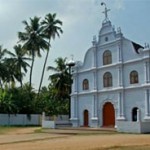
Built by the Europeans, this is the oldest church in India and is known for clearly marking out the burial spot of Vasco da Gama.
Vasco House:
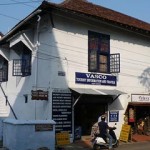 Featured with verandahs and windows with glass panes, this architectural construction on the Rose Street is believed to be among the ancient most Portuguese houses of the country where Vasco da Gama used to live.
Featured with verandahs and windows with glass panes, this architectural construction on the Rose Street is believed to be among the ancient most Portuguese houses of the country where Vasco da Gama used to live.
Veega Land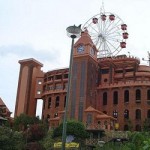
Veega Land is South India’s largest amusement park situated 14kms from Cochin. The park includes a range of attractions including mini castles, water theme park, ferris wheel, rides, slides, shows and fountains. Kids and adults alike can enjoy the fun and activities.
MarineDrive
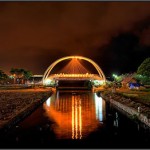 A stroll along the long tree-lined coastal pathway that lines the backwater is well worth the time spent, especially late afternoon or dusk. The bustling backwaters, dotted with fish ing boats, speedboats, ships, tankers and passenger boats, can be observed from this walkway that lines the coast.
A stroll along the long tree-lined coastal pathway that lines the backwater is well worth the time spent, especially late afternoon or dusk. The bustling backwaters, dotted with fish ing boats, speedboats, ships, tankers and passenger boats, can be observed from this walkway that lines the coast.
JawaharlalNehruStadium,Kaloor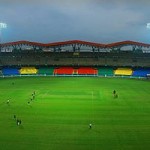
The Nehru stadium in Kaloor, has a seating capacity of 60,000 in multiple tiers. It is the fourth largest stadium in India and the largest in Kerala. The ground is lit by a set of uni que convex pylon floodlights that arch over the ground. The stadium is home to both the Kerala Ranji cricket team as well as FC Kochi football team.
Willingdon Island
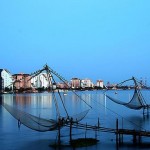 This man-made island was created in 1933 by sand dredged while deepening the backwaters for the Cochin Port, under the direction of Sir Robert Bristow. A while back the Airport, Sea port and the railway terminus (Cochin Harbour Terminus) were situated on this island. Today, it is the home of the Cochin Port and the headquarters of the Sourthern Naval Command. The airport continues to be the naval air station, while the main airport has been moved to Nedumbassery, 30kms north-east of Cochin. Most of the trains now terminate at Ernakulam Junction instead of Cochin Harbour Terminus.
This man-made island was created in 1933 by sand dredged while deepening the backwaters for the Cochin Port, under the direction of Sir Robert Bristow. A while back the Airport, Sea port and the railway terminus (Cochin Harbour Terminus) were situated on this island. Today, it is the home of the Cochin Port and the headquarters of the Sourthern Naval Command. The airport continues to be the naval air station, while the main airport has been moved to Nedumbassery, 30kms north-east of Cochin. Most of the trains now terminate at Ernakulam Junction instead of Cochin Harbour Terminus.
Tourist Spots (near Cochin)
Alleppey(Alapuzha)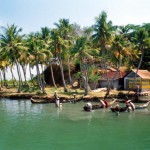
Situated 63 kms south of Cochin along the coast, Alleppey is connected to Kochi by rail and road. It is called the Venice of the East due to the extensive canal network here. Every year the famous snake boat race is held here.
Cheruthuruthy
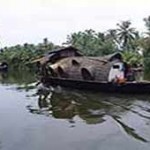 Cheruthuruthy is about 110 kms away from Kochi. It is the base of the Kerala Kalamandalam-the world famous art and dance academy where training in various traditional forms like Kathakali, Mohiniyattam etc are imparted.
Cheruthuruthy is about 110 kms away from Kochi. It is the base of the Kerala Kalamandalam-the world famous art and dance academy where training in various traditional forms like Kathakali, Mohiniyattam etc are imparted.
Kalady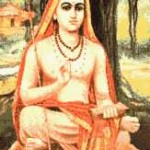
Situated 48 kms north-east of Kochi, on the banks of river Periyar (Poorna). Kalady is the birthplace of Sri Adi Sankaracharya, the monotheist Hindu philosopher. He lived in the 8th century AD and died at the early age of 32 years. He traveled throughout India, on foot, debating with scholars and spreading his theory of Advaita or monotheism. The Adi Sankara shrine and the 8-storey painted Adi Sankara Keerthi Sthambam (see picture) are a must-see for any visitor here.
Kodanad
 Kodanad is 30 kms north-east of Kochi situated on the lower ranges of the Western Ghats on the banks of river Periyar. The wildlife reserve is famous for the elephants and the largest elephant training centre is situated here. The reserve also features a mini zoo. Kodanad is close to St. Thomas church in Malayatoor.
Kodanad is 30 kms north-east of Kochi situated on the lower ranges of the Western Ghats on the banks of river Periyar. The wildlife reserve is famous for the elephants and the largest elephant training centre is situated here. The reserve also features a mini zoo. Kodanad is close to St. Thomas church in Malayatoor.
Kodungallor(Cranganore)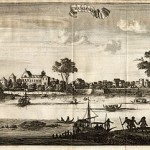
Kodungalloor is 35 kms north of Kochi. The world famous port here was destroyed by a flood which led to the formation of Kochi harbour. St. Thomas, the apostle, is believed to have landed here in 52 AD. Cheraman mosque, the first mosque in India, built in the form of a Hindu temple, is situated here.
Munnar
 About 140 kms on NH49, Munnar is a hill resort ideal for a relaxing holiday away from the tropical lowlands. The tea gardens and cardamom plantations give Munnar a beautiful look. Anai Mudi, the highest peak in South India is in these hills. The Munnar – Kodaikanal (another hill resort) road is believed to be the steepest road in South-East Asia.
About 140 kms on NH49, Munnar is a hill resort ideal for a relaxing holiday away from the tropical lowlands. The tea gardens and cardamom plantations give Munnar a beautiful look. Anai Mudi, the highest peak in South India is in these hills. The Munnar – Kodaikanal (another hill resort) road is believed to be the steepest road in South-East Asia.
Periyar Wildlife Sanctuary, Thekkady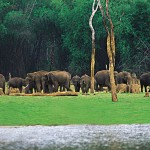
Elephants, bisons, antelopes, samburs, monkeys and bears can be found in their natural habitat in this world famous wild life sanctuary, situated 190kms east of Cochin. A boat ride through the man-made lake in the heart of the sanctuary provides a unique opportunity to observe these animals in their natural surroundings.
Thattekad Bird Sanctuary
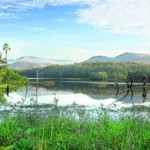 Thattekad bird sanctuary is located 60kms east of Cochin near Kothamangalam. Thattekad is located on the northern bank of river Periyar is a tropical evergreen forest in the foothills of the Wester Ghats. Spread over 25 sq kms, this bird sanctuary was once regarded as the richest bird habitat in peninsular India. In spite of recent developments and deforestation, this sanctuary is still home to a large number of rare and exotic bird species.
Thattekad bird sanctuary is located 60kms east of Cochin near Kothamangalam. Thattekad is located on the northern bank of river Periyar is a tropical evergreen forest in the foothills of the Wester Ghats. Spread over 25 sq kms, this bird sanctuary was once regarded as the richest bird habitat in peninsular India. In spite of recent developments and deforestation, this sanctuary is still home to a large number of rare and exotic bird species.
Lakshadweep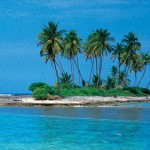
Lakshadweep (meaning thousand islands), a haven of unspoiled natural beauty, lies 220-440 kms off the coast of Kochi. Lakshadweep is an archipelago consisting of 12 atolls, 3 reefs and 5 submerged banks. Only 10 islands are inhabited while 17 are uninhabited islands with a total geographical area of 32 sq. kms. Lakshadweep is connected to the mainland by air and sea links to Cochin. The sea route takes around 18-20 hours. Miles and miles of sandy beaches, coral reefs and coconut groves will leave anyone mesmerised.
To Reach Kochi
By Air: The Cochin International Airport or C. I. A. L., situated in Nedumbassery towards the northern side of the city, is around 25 km from the city centre. This airport serves both national as well as international travelers. Direct flights to Malaysia, Middle East and Singapore are available from this airport.
By Rail: Ernakulam Town Railway Station (North Railway Station) and Ernakulam Junction (South Railway Station) are the two important railway stations in the city. Besides these, some of the other small railway stations, connecting the city to its outskirts,
By Water: Ranked among the major seaports of the country, Kochi harbor is one of the safe harbors on the Indian Ocean. Administered by the Cochin Port Trust, which is an autonomous body, this port provides facilities for passenger ships to Lakshadweep and Colombo.
By Road: Some of the important bus terminals in Kochi are located in Ernakulam Jetty, Ernakulam Town and Kaloor. State-run and private bus services, mainly, serve the city. Besides that, auto rickshaws and rented taxis are even available to travel within and around the city.
By Bus: Kochi is well connected by bus services. KSRTC connects Koch with all major cities in Kerala and with many cities in Tamil Nadu and Karnataka. Deluxe Volvo buses are available in plenty at any time to Chennai, Bangalore, Trivandrum, Hyderabad and Mumbai from Kochi. These buses charge about Rs 3 – Rs 4 per km.
General Information
| Area | 95 sq. km. |
| Population | 1.35 million (2001) |
| Location | 9° 58″N, 76° 17″E |
| Time Zone | Indian Standard Time (IST) – UTC +5:30 |
| Altitude | Sea level |
| Rainfall | 350cm annually |
| Temperature | 20°C-35°C (68°F-95°F) |
| Languages | Malyalam,English is widely understood. Hindi and Tamil are used occasionally. |
| Religions | Being a city in a secular country, almost all major religions are represented including Hinduism, Christianity, Islam, Sikhism, Jewism, Jainism and Buddhism. |
Submit your review | |
